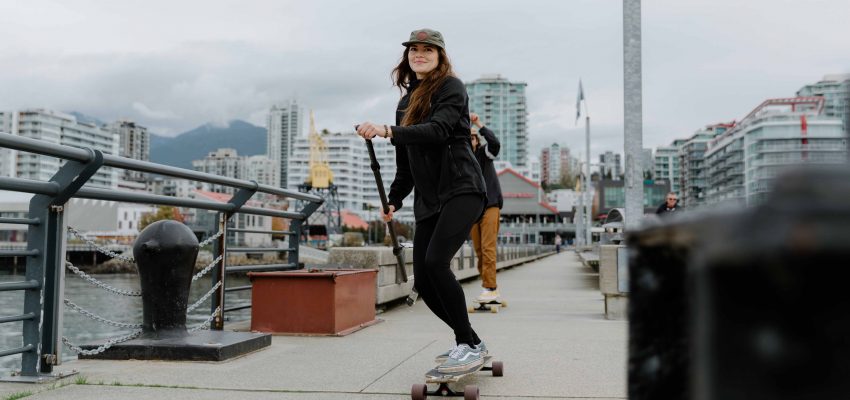Interested in getting on a longboard and paddling, but unsure where to start? SUPStick has you covered – from the tools needed, through positioning, to moves on the go. Let’s get into how you go from novice to pro:
Don’t Leave Home Without
There are some land paddling essentials you will want before beginning your session:
- Longboard – this one seems like a no-brainer, but not all longboards are equal. If you are a beginner, look for longer boards with wider wheelbases. Although these boards will have a wider turn radius, they provide additional stability as you begin your land paddling.
- SUPStick – Not all paddles are considered equal. The SUPStick provides a paddle’s most intuitive feel on the market, with a lightweight yet sturdy design to stand up to your learning curve.
- Protective Items – Helmet, wrist pads, knee and elbow pads, and closed-toe shoes. Protecting yourself with these items will help provide a safe experience. There is nothing less fun than taking a tumble and realizing you really should have worn knee pads or skinning the tops of your toes in flip-flops while pushing off a little strange. Although we encourage these items every time you use a SUPStick, they are incredibly essential to wear while learning.
The Basics
Now that we have all our tools let’s talk about our starting position for land paddling. Start on a flat, traffic-free location like an empty bike path or well-maintained sidewalk. That way, you can go at your own pace and not have to worry about surprise cracks or debris running under your wheels.
Stand on your board with your feet perpendicular, as you would a skateboard. Rotate your feet slightly towards the front of your board, and ensure you feel comfortable in your stance with your weight evenly distributed. The foot you lead with closer to the front of the board is up to you – ‘regular’ stance leads with the left, and ‘goofy’ leads right. The foot you don’t lead with you use to push.
For gripping your SUPStik, the hand that will cross over your body when paddling will grasp the top encompassing the ‘T’ portion of the paddle. The alternate hand (on the side of the body you will be paddling on) will grab roughly halfway down the SUPStick – the grip should approximately line up with your waist. If you have ever used a paddle for a boat, canoe, or standing paddle in the water, the grip will feel very similar. If you have your left foot forward, your top hold of your SUPStick should be your left hand, and vice versa for the right.
Let’s Get Going
With knees slightly bent and your core engaged, push off with your non-leading foot onto the pavement. Start slow, and ensure you feel comfortable and balanced before proceeding. When land paddling, use your top hand to guide and your bottom hand to add force through the row. Taking an upward and slightly forward stroke, push your SUPStick into the ground, use a rowing motion and paddle through the pavement. The SUPStick flexes into the movement be design, giving you a realistic rowing experience and limiting jarring hits onto the pavement. As you lift your SUPStick from the pavement, try not to twist and destabilize yourself. Keep your core engaged, giving yourself additional stability. As you gain more experience, twisting and maneuvering will enhance and alter your experience.
Practice shifting your weight towards your toes and heels to make turns and weaves. The SUPStick can help tighten the turns made once you are comfortable. Touchdown on the pavement on the side you are shifting your weight towards, and the SUPStick will make the turn more precise.
To stop, shift your weight to your back leg and foot on your longboard and bend your knee low towards the board deck. Doing this will slow and ultimately stop your board. You can use your SUPStick behind you to assist you in slowing down.
When land paddling, it is essential to learn the fundamentals to minimize potential injury. Now that you have the basics of land paddling, you can enjoy this new activity while maintaining proper form. With a strong foundation, soon you’ll be land paddling with more complex moves and on more challenging terrain with ease.
Learn how to choose the right longboard for you here.
